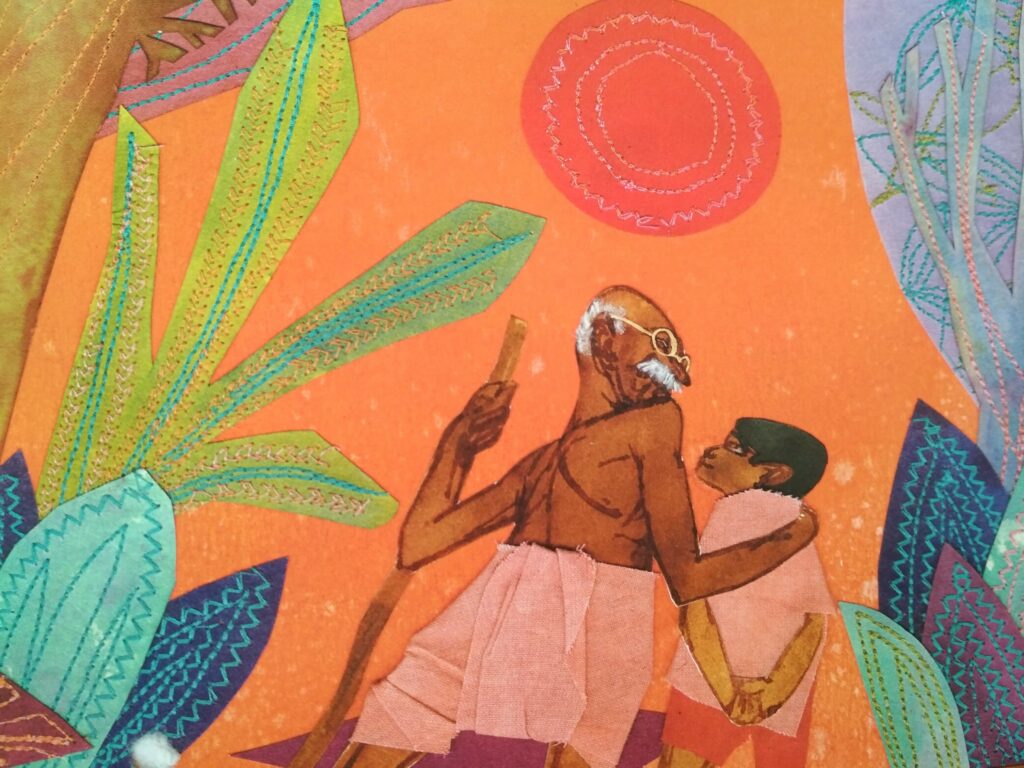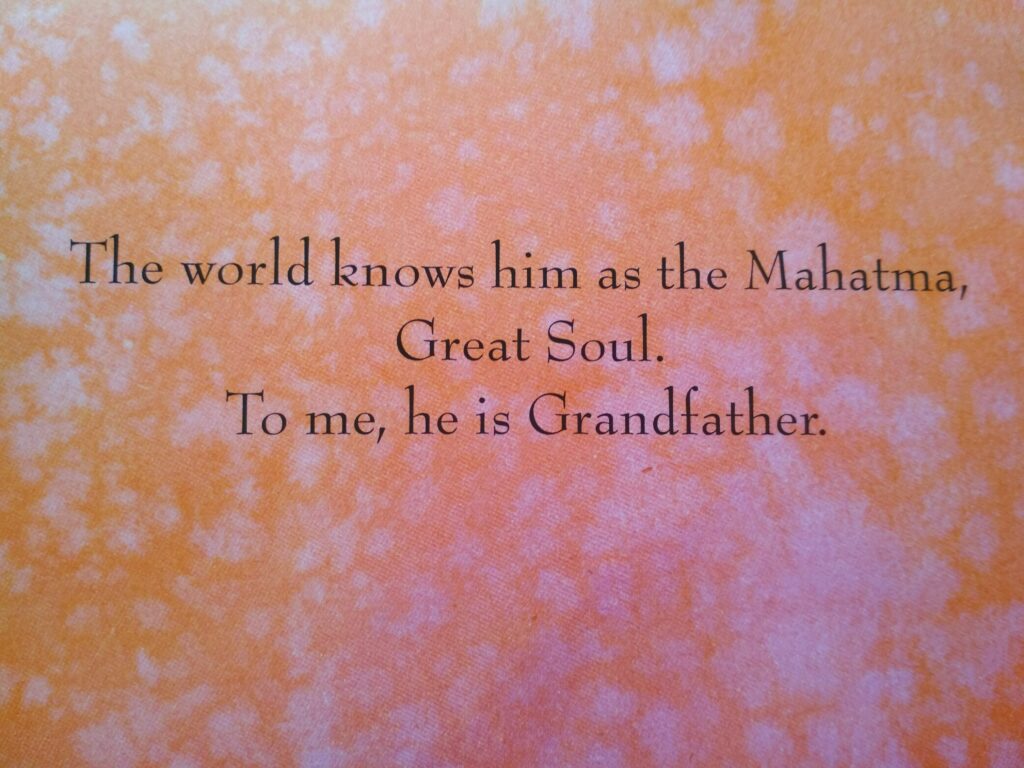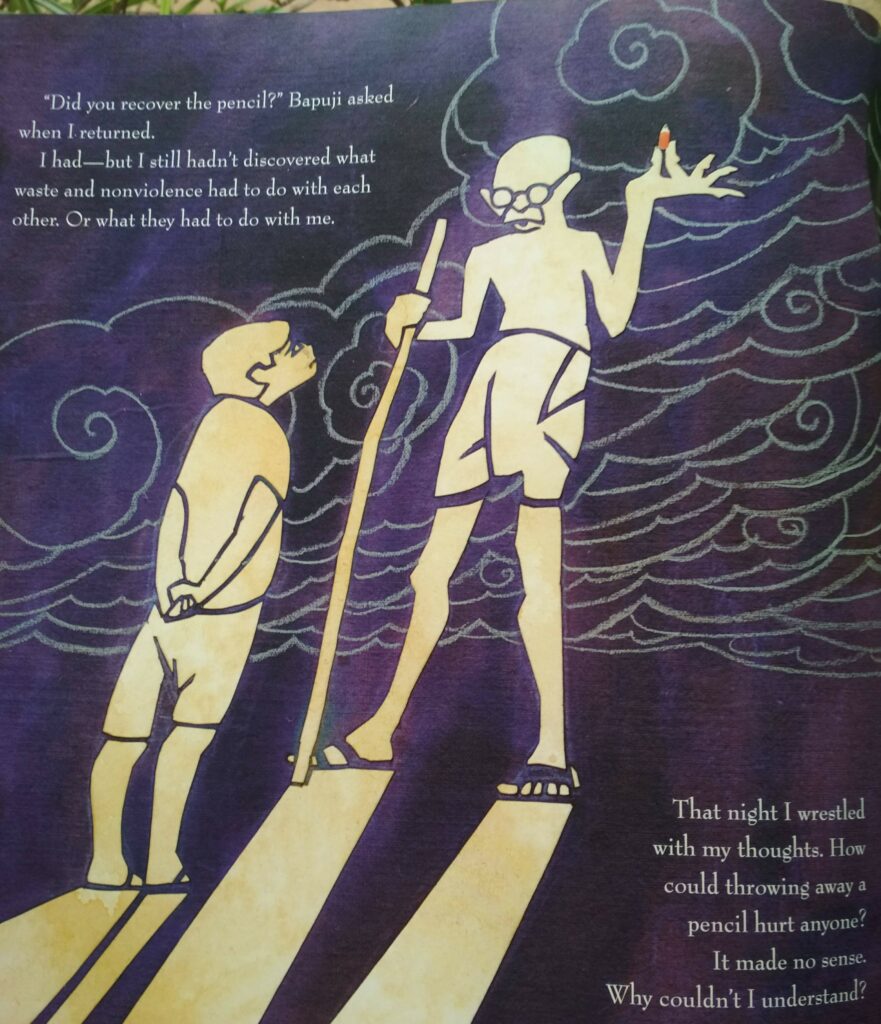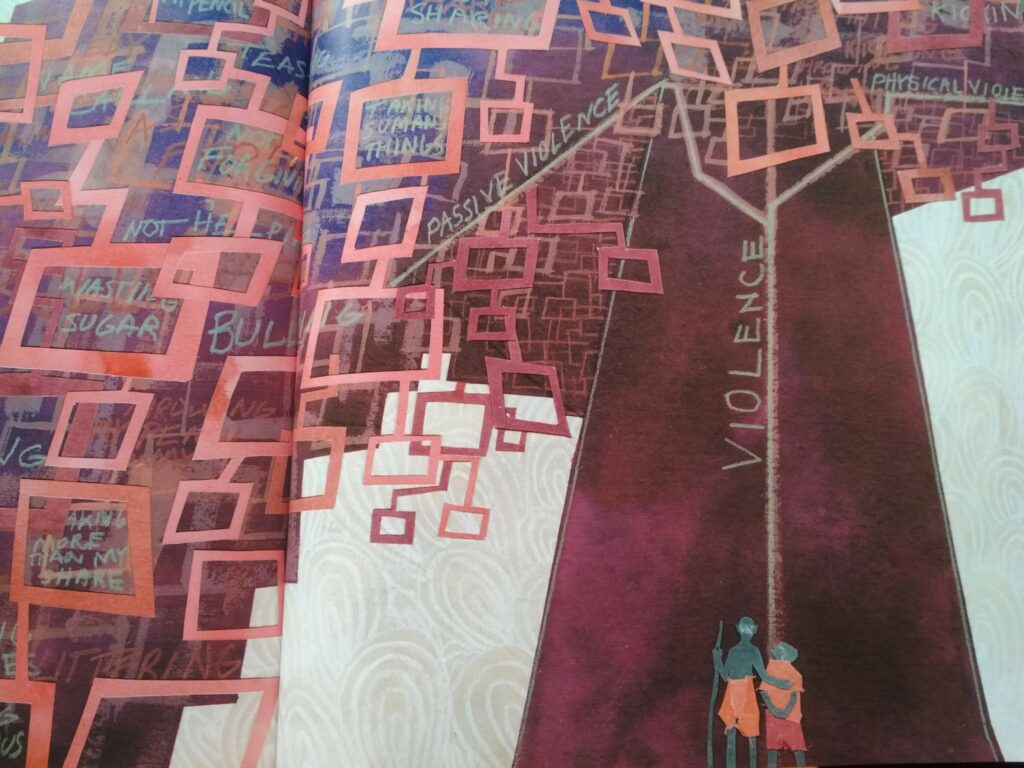Be the Change.
An oft-repeated phrase we hear in the context of Mahatma Gandhi.
So when I stumbled upon a book by this title, I expected it to be a preachy and moralistic.

But what attracted me to it anyway, was the author – Gandhi’s grandson Arun Gandhi. (not to mention the unique and endearing illustrations by Evan Turk). The story recounts grandson’s personal experience with grandfather.
I have read much about Gandhi. The personal and the political. Read and heard his grandsons Rajmohan and Gopalkrishna Gandhi, respected historians and writers, talk about their grandfather.
Yet, what intrigued me about this book was that it contained the perspective of his grandson as a child.
And most of all – that it didn’t follow the typical drab narrative of a historical book for children (which I absolutely abhor)- the kind that begins with ‘Mohandas Gandhi was born on 2nd October, 1869 in the town of Porbandar.”
Instead it begins with the personal connect of the writer…

The narrative takes the reader straight to life in Sevagram Ashram, where Gandhi lived for many years where Arun happens to join him as a child.
“There were eleven vows of ashram living. The one I found the hardest was the vow not to waste….I wasn’t sure how not wasting food or other items made life nonviolent, but I did my best to follow the path put before me.”
Arun sees the ashram and life there through his child-like eyes, not understanding what the fuss is all about.
‘I stood with them and listened as he spoke about Satyagraha, passive non-violence…..
How was I to understand that? It hurt my head to even think about.”
This sets the tone. The child doesn’t understand. He has to wake up early and do much work in the ashram. Listen to his grandfather’s speeches – of which he understands little. He doesn’t enjoy the experience.

As we delve in, the focus shifts to Arun coming around to understanding the meaning of his grandfather’s teachings. That is triggered by an event so small, that most people wouldn’t even have noticed it.
It all begins with Arun throwing away a pencil stub.
That one event, begins an interesting conversation and a new episode between grandfather and grandson.
“That evening, I asked Bapuji for a new pencil.
“This morning you had what appeared to be a perfectly good pencil,” Grandfather said.
“It was too small. I threw it away,” I argued. I didn’t share what I was really thinking : I was a Gandhi – didn’t I deserve a new pencil?
The little pencil stub takes grandfather and grandson through an interesting journey of discovery. Gandhi explains to his grandson why waste is criminal.

Gandhi advises Arun to begin drawing a Tree of his Actions. With one branch depicting Physical Violence like bullying, beating and so on. While the other branch depicts Passive Violence such as being greedy, not sharing and so on.
Arun begins to do that. And to his dismay, discovers that the branch of Passive Violence grows massive beyond his expectations.

In making the tree, Arun begins to see how little actions can have great ramifications. His grandfather comes by everyday to watch his tree grow and they discuss the new additions.
Arun finally begins to understand why Waste is a form of Violence.
The narration by Bethany Hegedus is simple and non-preachy. The illustrations by Evan Turk off-beat and unique. And most of all, the perspective of grandson Arun Gandhi, is intimate and unique.
A refreshing and meaningful story for children about Gandhi…more so in the world we live in today.



Trackbacks and Pingbacks